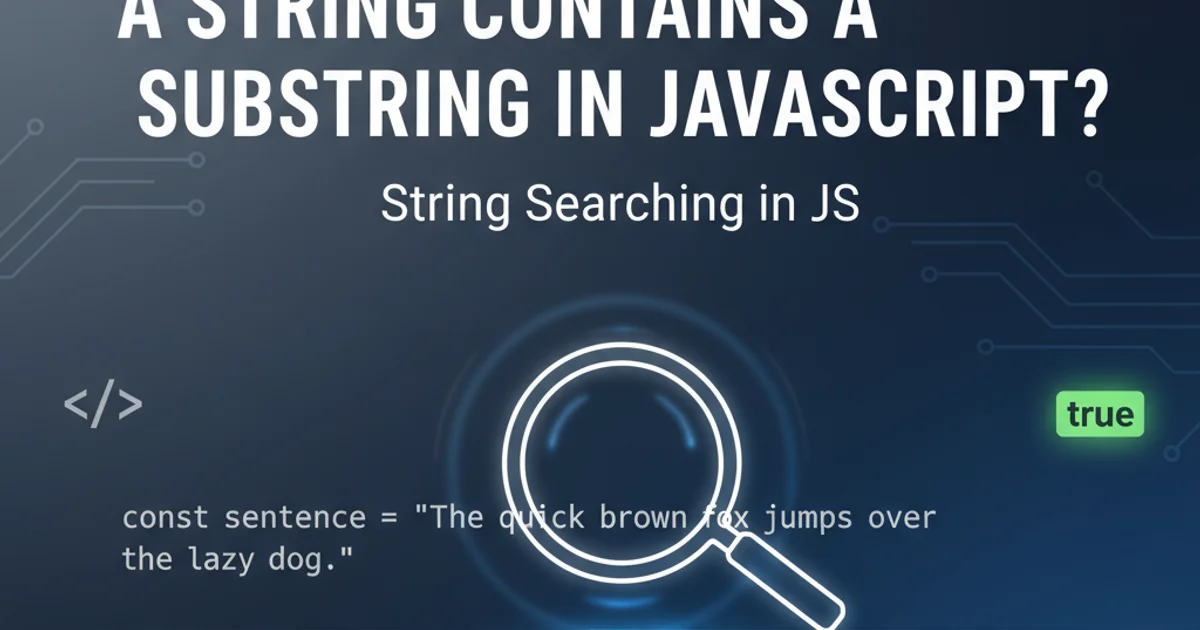Using Bootstrap Tooltip with AngularJS
Categories:
Integrating Bootstrap Tooltips with AngularJS Applications

Learn how to effectively integrate and manage Bootstrap tooltips within your AngularJS 1.x applications, covering common pitfalls and best practices.
Bootstrap tooltips provide a sleek, interactive way to display additional information on hover. While integrating them into a static HTML page is straightforward, bringing them into a dynamic AngularJS environment requires careful consideration of the AngularJS lifecycle and DOM manipulation. This article will guide you through the process, addressing common challenges and providing robust solutions.
Understanding the Challenge: AngularJS vs. jQuery
AngularJS operates on a concept of a 'digest cycle' and data binding, where the DOM is managed by Angular. Bootstrap's tooltip plugin, however, is a jQuery plugin that directly manipulates the DOM. This fundamental difference can lead to issues where tooltips don't initialize on dynamically added elements, or they persist after their parent elements are removed from the DOM. The key is to ensure that the tooltip initialization happens after AngularJS has rendered the elements and that tooltips are properly destroyed when elements are no longer needed.
flowchart TD
A[AngularJS Renders Element] --> B{Element in DOM?}
B -- Yes --> C[Tooltip Directive Initializes]
C --> D[jQuery Tooltip Activated]
B -- No --> A
D --> E{Scope Destroyed?}
E -- Yes --> F[Tooltip Destroyed]
E -- No --> DLifecycle of a Bootstrap Tooltip in AngularJS
Implementing a Custom Tooltip Directive
The most robust way to integrate Bootstrap tooltips with AngularJS is by creating a custom directive. This allows you to encapsulate the tooltip's behavior, ensuring it's initialized and destroyed correctly within the AngularJS lifecycle. A directive gives you control over when tooltip() is called and how it interacts with the scope.
angular.module('myApp', [])
.directive('bootstrapTooltip', function() {
return {
restrict: 'A',
link: function(scope, element, attrs) {
// Initialize tooltip on element creation
element.tooltip({
title: attrs.bootstrapTooltip,
placement: attrs.tooltipPlacement || 'top',
trigger: attrs.tooltipTrigger || 'hover focus'
});
// Update tooltip title if it changes dynamically
attrs.$observe('bootstrapTooltip', function(value) {
if (value) {
element.attr('data-original-title', value);
}
});
// Destroy tooltip on scope destruction
scope.$on('$destroy', function() {
element.tooltip('destroy');
});
}
};
});
This directive bootstrapTooltip can be applied to any HTML element. It takes the tooltip's content from the bootstrap-tooltip attribute, and allows for optional tooltip-placement and tooltip-trigger attributes. Crucially, it initializes the tooltip in the link function (after the element is in the DOM) and destroys it when the scope is $destroyed, preventing memory leaks and orphaned tooltips.
Usage and Best Practices
Once the directive is defined, using it is straightforward. Simply add the bootstrap-tooltip attribute to any element you want to have a tooltip. Remember to include jQuery and Bootstrap's JavaScript files before your AngularJS application files.
<!DOCTYPE html>
<html lang="en" ng-app="myApp">
<head>
<meta charset="UTF-8">
<title>AngularJS Bootstrap Tooltip</title>
<link rel="stylesheet" href="https://stackpath.bootstrapcdn.com/bootstrap/3.4.1/css/bootstrap.min.css">
<style>
body { padding: 20px; }
</style>
</head>
<body>
<div ng-controller="MyController">
<button class="btn btn-primary"
bootstrap-tooltip="{{ dynamicTooltipText }}"
tooltip-placement="right">
Hover me for a dynamic tooltip
</button>
<br><br>
<button class="btn btn-info"
bootstrap-tooltip="This is a static tooltip."
tooltip-placement="bottom">
Static Tooltip
</button>
<br><br>
<input type="text" ng-model="dynamicTooltipText" placeholder="Change tooltip text">
</div>
<script src="https://ajax.googleapis.com/ajax/libs/jquery/1.12.4/jquery.min.js"></script>
<script src="https://stackpath.bootstrapcdn.com/bootstrap/3.4.1/js/bootstrap.min.js"></script>
<script src="https://ajax.googleapis.com/ajax/libs/angularjs/1.8.2/angular.min.js"></script>
<script src="bootstrapTooltip.js"></script>
<script>
angular.module('myApp').controller('MyController', function($scope) {
$scope.dynamicTooltipText = 'Initial dynamic tooltip content';
});
</script>
</body>
</html>
ng-repeat), ensure your directive's $destroy listener is correctly implemented. This prevents memory leaks and ensures that tooltip instances are cleaned up.$(element).tooltip() inside your controller or service. This bypasses AngularJS's DOM management and can lead to unpredictable behavior, especially with dynamic content or routing changes. Always encapsulate DOM manipulation within directives.